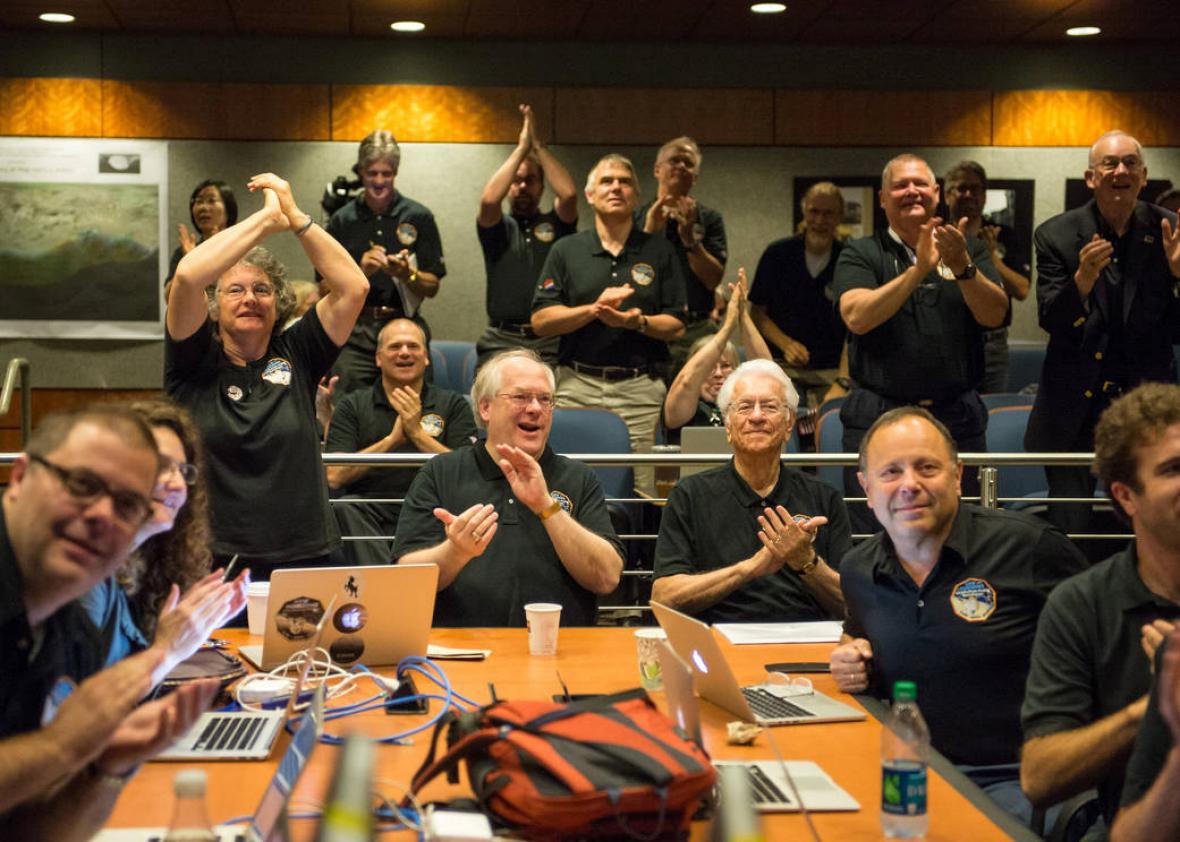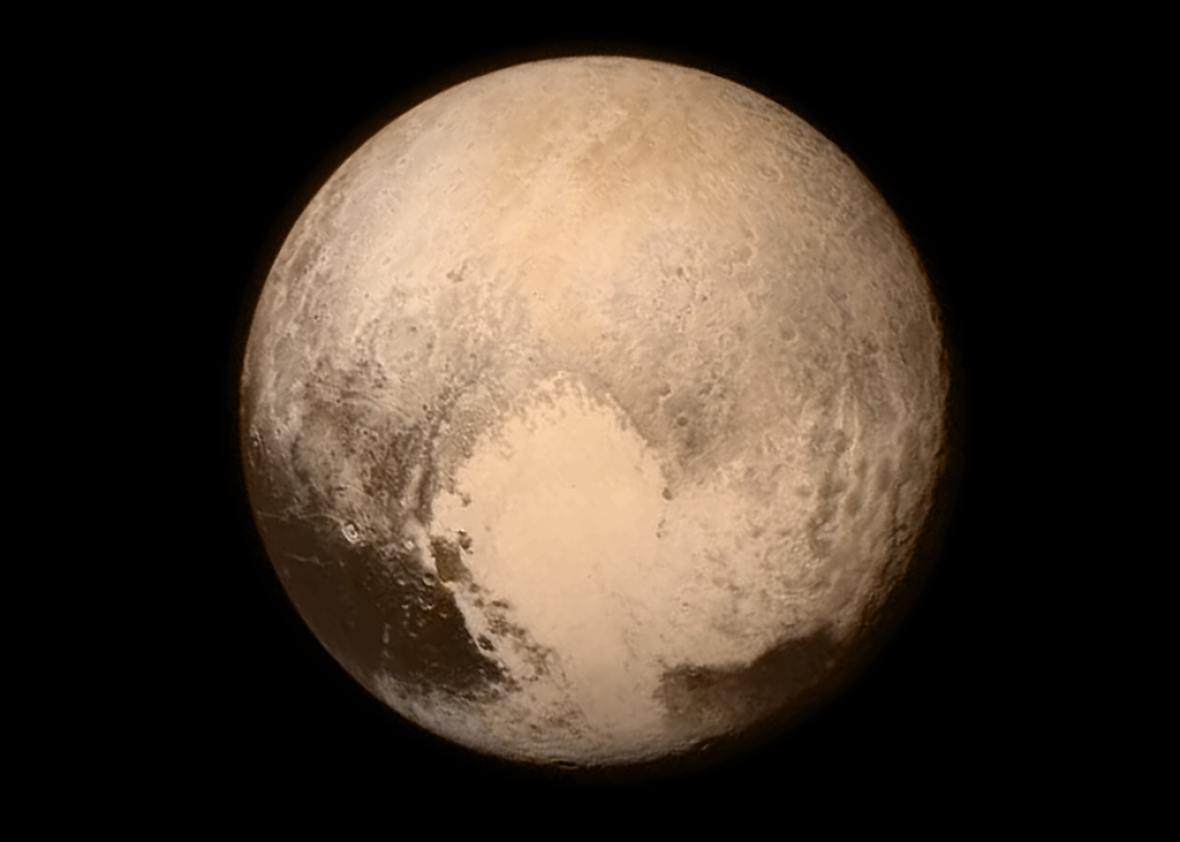This is it: We’ve made it to Pluto, and what a fascinating place it is. Tuesday morning’s true-color, full-disk image taken by the New Horizons probe is destined to be the textbook image for decades to come, at least. It’s 1,000 times better than any image we could capture from Earth.
Scientists were ecstatic.

NASA/Bill Ingalls
And there’s nothing better than excited scientists.
The mission’s principal investigator, Alan Stern, said the moment was a historic one for all of humanity. “We have completed the initial reconnaissance of the solar system,” Stern said at a NASA press conference. In that proud moment, some scientists waved American flags and chanted “USA!” though many noted that this was an international effort, and the atmosphere in the room was more like a giddy sleepover than a display of American scientific triumph.
Still, our exploration of Pluto includes a distinctly American story—it was discovered in 1930 by Clyde Tombaugh, who grew up in Kansas. The New Horizons spacecraft carries some of his ashes.
Slate’s Phil Plait already posted his initial thoughts, and he will be writing more throughout the week as data streams in. The first emotional, sleep-deprived impressions of the image from other Pluto scientists were full of questions, but immediate interest centered its prominent heart-shaped bright patch.
The spacecraft’s closest approach to Pluto came at 7:49 a.m. Eastern time Tuesday, but it’s so busy and so far away, we won’t get the really high-resolution stuff until later in the evening. New Horizons is actually officially out of Earth contact for most of Tuesday as it focuses on data collection. Stern and his team are eager to catch a glimpse of the “I survived” signal expected about 13 hours after its closest approach.
Since Pluto will be mostly in shadow after the probe’s closest approach, the flyby images themselves will be detailed strips with 10 times the resolution of Tuesday morning’s image and extremely interesting to scientists, but probably not as stunning as this one. In one planned image, Pluto will appear as a thin crescent with the Earth and the Sun as distant points of light.
It’ll take 16 months for New Horizons to send back all the data it’s taking—a “waterfall,” according to Stern. And at Tuesday morning’s press conference, Stern revealed he’s already thinking about the next Pluto mission:
Update, 11:25 a.m.: Video of mission scientists’ reactions to the moment of New Horizons’ closest approach is now available:
